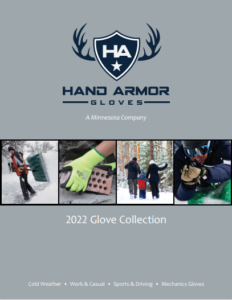Just what happens to that deerskin?

Minnesota deer hunters — well, the successful ones — are grass-roots suppliers to a multibillion-dollar, global industry.
Most never think about it, but long after the last venison steak from the 2014 season has been taken off the grill, the animal’s hide lives on in the vast fur- and leather-apparel producer’s network. Buyers, traders, sellers, salters, shippers, tanners, trimmers, clothing and accessory manufacturers, wholesalers and retailers all depend on the flow of deerskins. That flow begins with the pull of a trigger or the release of an arrow.
North Star Fur and Trading of Marine on St. Croix is part of the fur-and-leather industry. “Deer hides are the bread and butter of our company,” said Jon-Paul Rosenwald who, with his father, Jim, operate the fur trading company. “Most years, we will grade, buy and sell 30,000 to 40,000 whitetail deer hides.”
Although North Star also buys many other fur-bearing animal pelts, its leading commodity is deerskins by far. “The mink, raccoon, beaver and coyote market swings like the stock market, up wildly one year and down the next,” Rosenwald said. “Because of the natural beauty, durability and softness of deerskin, that market is always good.”
Rosenwald and his father, who founded the company in 1974, buy deerskins directly from hunters, venison processors or organizations like Hides for Habitat that act as collection points.
Hides for Habitat, a program of the Minnesota Deer Hunters Association, tallied more than 21,000 hides in 2013.
That added nearly $200,000 to its whitetail habitat improvement projects. North Star typically pays $5 for a yearling and up to $15 for a large, unblemished hide.
“Deerskins from the northern tier of states are highly prized in the industry because they are thicker and heavier,” Rosenwald said. “Michigan deer hides top Minnesota’s because they have fewer ticks and barbed-wire fences to damage the skins.”
From North Star’s fur-grading barn, located north of Stillwater, the hides are sent during the season to a nearby company in Wisconsin for salting. Salt prevents spoilage during the long trip ahead. As many as 4,000 hides are packed into 40-foot-long metal shipping containers and sent by rail to Seattle. From there they are loaded onto ships destined for China.
The wholesale price paid for each hide by the Chinese processors is a trade secret. But Rosenwald said his is a small-margin business that depends on large volumes.
“Our partner in China is capable of tanning huge numbers of deerskins,” he added. He said that the Environmental Protection Agency has shut down all the big U.S. tanneries owing to the caustic chemicals used in the process.
After tanning, the hides are graded and trimmed. Then the value of Minnesota and other northern deer comes into play. Because of their thickness, the hides can be split or peeled into two or more layers. The inside layer yields suede; the outer layers full-grain leather. Italian makers of high-end shoes, handbags and jackets are willing buyers of this soft Minnesota-made leather. A typical northern hide will produce eight square feet of leather, worth from $25 to as much as $100 from clothing and accessory manufacturers.
Some of the deerskin North Star Fur ships to China comes back to the Rosenwalds as 3M Thinsulate-lined gloves. The same Chinese company that tans the Minnesota hides produces the gloves. In a typical year, North Star will sell 200,000 pair of gloves directly to consumers, other wholesalers, or retailers like Joe’s Sporting Goods in St. Paul.
“Our business is based on a network of relationships my father has developed over 40 years,” said Rosenwald. “From the deer hunter to the person wearing the gloves and everyone in between in the fur-and-leather industry, it is a community built on trust.”
Minnesota hunters can take pride that their deer-hunting skills support a global industry employing thousands of people, including one busy export-import company along the St. Croix River.
All this and warm gloves, too.
Bill Klein is an avid hunter, angler and student of nature. He lives in May Township.

